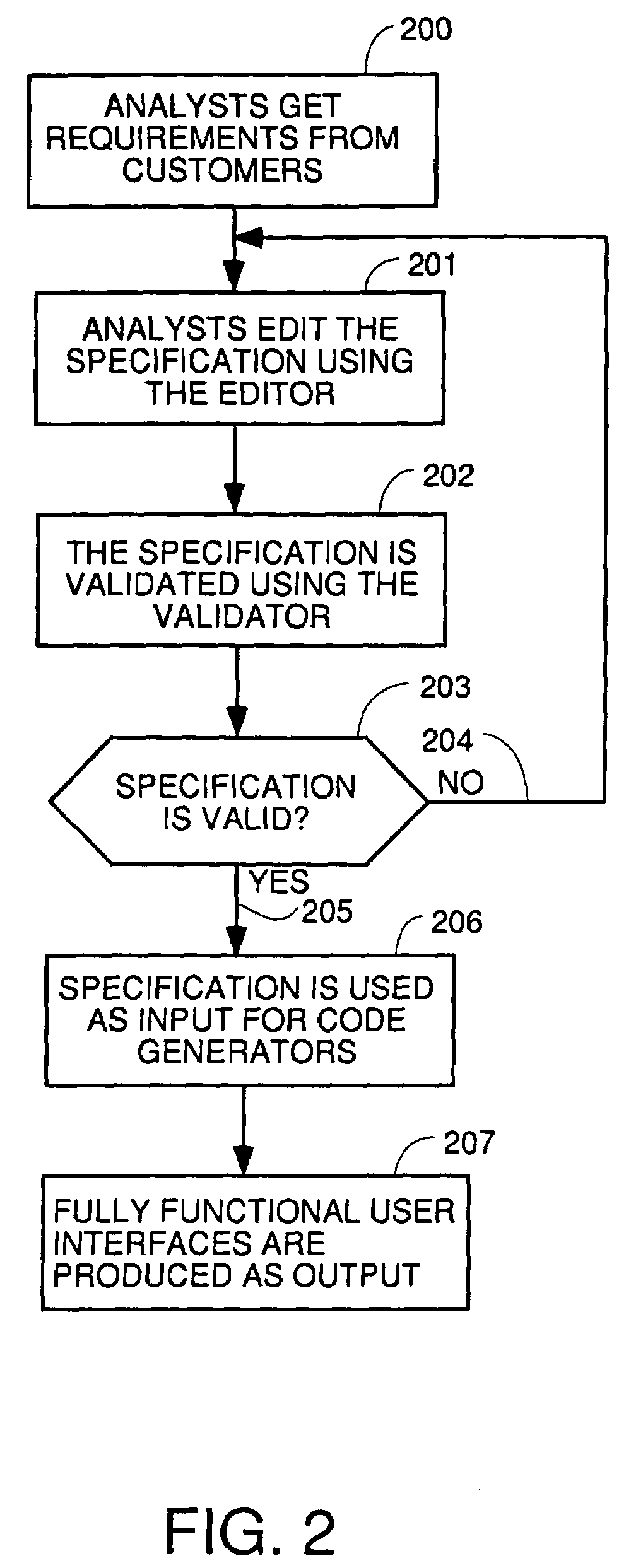Method and apparatus for automatic generation of information system user interfaces
a technology of information system and user interface, applied in the field of user interface and software engineering, can solve the problems of long delay, insufficient domain model consideration of ui specification methods, and bugs in business logic code itsel
- Summary
- Abstract
- Description
- Claims
- Application Information
AI Technical Summary
Benefits of technology
Problems solved by technology
Method used
Image
Examples
Embodiment Construction
[0061]The invention improves an automatic software production system as described in a United States patent application entitled Automatic Software Production System, filed Apr. 4, 2000, Ser. No. 09 / 543,085 and three continuation-in-part of the same title all filed on Jun. 1, 2001, and having Ser. Nos. 09 / 872,413, 09 / 872,087, and 09 / 872,333, respectively, all of witch describe systems to automatically produce robust and fully functional business applications from specifications and all of which are hereby incorporated by reference.
[0062]Referring to FIG. 1 there is shown a block diagram describing an overview of the software development process. A given problem 100 can be implemented in many ways 101 taking different analysis, design and implementation decisions. The abstraction separation between the analysis and the implementation is called Problem Space 102 and Solution Space 103, respectively. In this scenario, the Conceptual Model 104 is a set of graphical objects defining the ...
PUM
 Login to View More
Login to View More Abstract
Description
Claims
Application Information
 Login to View More
Login to View More - R&D
- Intellectual Property
- Life Sciences
- Materials
- Tech Scout
- Unparalleled Data Quality
- Higher Quality Content
- 60% Fewer Hallucinations
Browse by: Latest US Patents, China's latest patents, Technical Efficacy Thesaurus, Application Domain, Technology Topic, Popular Technical Reports.
© 2025 PatSnap. All rights reserved.Legal|Privacy policy|Modern Slavery Act Transparency Statement|Sitemap|About US| Contact US: help@patsnap.com



